Leaderboard
Popular Content
Showing content with the highest reputation on 11/07/2019 in all areas
-
Time flew by up at the cabin and on my little claim this season. I continued to clear, detect, and drywash the decomposed granite bench areas. Here’s a nice clean out from one drywash session: I also reworked the sides of some oldtimer Diggings, filling in their ditch as I go....lots of work here for little return lol! Found some nice nuggies when I uncovered some crevices in a different bedrock...biggest piece was almost .6gram, decent size for up here: A highlight of the summer was having my nephew’s boys visit. They learned drywashing, running the concentrates through the recirculating sluice, then how to pan. Each ended up with a couple grams(hmmm....maybe a little “salt” in those concentrates lol): AND the season ended on a positive note! Found a nice handful in this small scraping from a new spot....definitely will setup the drywasher here next year! Ended up with just shy of 12 grams total up here for the season....not much gold, but tons of fun and memories! 🙂8 points
-
From Wikipedia: "A long-range locator is a class of fraudulent devices purported to be a type of metal detector, supposedly able to detect a variety of substances, including gold, drugs and explosives; most are said to operate on a principle of resonance with the material being detected." There is more at the link, but "a class of fraudulent devices" says it all as far as I am concerned. I just wanted to post this so people can find it in the search results in case they are looking. For me these devices have always failed the most basic test... the experience of hundreds of thousands of prospectors and treasure hunters around the world. Treasure hunters and gold prospectors will give anything a try that might work, no matter how crazy it seems. If it works, the use soon spreads to other prospectors. You can Google genuine successful results for regular metal detectors all day long. The internet is full of successful people using normal metal detectors to make great finds. Except for a few obvious promotionals, the success stories of people using LRL devices are glaringly absent. All excuses for why this is so flies in the face of the simple common sense answer - they don't work. In almost 50 years of metal detecting and prospecting I have met a lot of successful people, and none of them got that way by relying on a long range locator. Part two of the common sense test is if they did work, there would be at least a few users of these devices that would be fabulously rich. The few I have met are anything but... just the opposite. Again, excuses made about why these rich LRL users are invisible fly in the face of common sense. Like wanting their privacy, as if we are not a country that brags about every tiny thing we can think of! The only people getting rich are the people selling these devices. I personally refuse to purchase anything from a company selling long range locators. It says something about the management of the company that makes me prefer to do business elsewhere. If you want the absolute best information on these device anywhere visit the website below. More at Geotech5 points
-
5 points
-
5 points
-
I've read a number of threads on the best way to cover and protect the coil and there's been a lot of good ideas for sure! I thought I'd add mine for those who primarily hunt sandy beaches like I do. Over the years, I've tried several ways to keep sand out since a build up between the coil and cover could and will result in a degree of false signals/chatter. What I finally determined was that sand is the "cleverest" of all elements with which I've had to contend. It can and does get into everything. No matter how well I thought I'd sealed the cover onto the coil, sand still managed to get in there...granted not much but my thinking is that if it's not supposed to be there, I want it outta there. And the one time I tried sealing the cover, it was he** to get the cover off! Conclusion; Sand will always get in but with most methods of sealing the cover, there's no way for it to get out! I decided to find a way to give those clever grains of sand a way out. I came up with this solution about 5 or 6 years ago and it's worked well for me on my Florida beaches. I simply drilled holes in the cover which allows the water to rinse out the sand while still protecting my coil from bumps and scrapes. After searching the dry and wet sand, a few swipes in the surf and the sand is rinsed away. When I get home and remove the cover, there is only a very few isolated grains between the coil and cover...not nearly enough to cause me any trouble whatsoever. Works for me but your mileage may vary and I'm always open to better ideas. Note: I drill the holes from the inside out so there are no ridges on the inside which would inhibit efficient draining. Just one method from my sandy foxhole.....3 points
-
G'day all.. Just got a hold of a Gold Bug Pro and am starting of on the island's beaches.. so far I've found a handful of coins (my first one was a $1 so struck 'gold' straight away) and three old fashioned spoons on a site where an old cottage once stood in the late-1940s. I've done a bit of research on gold on the island and it gets a few mentions. The Brisbane Courier in 1886 recons that: "Samples of quartz from the newly-discovered reef on Magnetic Island are now in possession of the police-magistrate. It is good brown open quartz, showing fine gold freely. The reef from which the stone was taken is 3ft, wide with the casing. One solid quartz reef has been traced 50 yards along the surface. The reef is situated within a stone's throw of the sea, three miles from Picnic Bay in the direction of the Quarantine Station". Needless to say I've had a search out there but being a beginner i haven't got much of a clue what i'm listening for. I've only just worked out which sounds and readings each Australian coin makes, and that is only on the beach. Gold on Magnetic Island gets mentioned again in 1970 in the BMR's Geology of Townsville (survey map) which recons: 'Gold is also known to occur on.. Magnetic Island (uppermost Carboniferous granite).' I believe that this granite occurs on the western side of the Island, which also fits in which the name of a hill in that area - its called Goldmine Hill. Sounds like its all coming together a bit too easy! But I'll keep going till I can at least say I've found gold on the island. All in all, this detector prospecting game is turning out great fun, just swing away on the beach in the mornings and the possibility of gold in them there hills certainly keeps it interesting. Just a quick question: how have other GBP users found this detector for coin shooting?3 points
-
2 points
-
You are not allowed to do anything these days here in Australia now I know why. https://1drv.ms/v/s!AqiKyrTQ2zQ3rAYN5Y7CSS8YkNVd?e=7Dj8Yp2 points
-
Episode 2 is online: Finding a good spot: Two swiss hobby gold prospectors travel to Chicken, Alaska to find some gold on Myers Fork. In this episode, we try to find a good spot on Myers Fork and finally we find one, but way further upstream, from where we normally prospect.2 points
-
Now that is clever, and funny, thanks for posting it. And there's definitely aspects of LRL innards in this diagram. Not just the hot melt glue - there's the non-functional 'decoy' component; the impenetrable jumble-of-wires; the 'Holy Water' and the magic smoke container; the switch that's glued in the 'open' state so it never functions. An obvious omission is a frog's leg, possibly the first electronic component. And a jar of 'Gypsy tears'. I like the inclusion of the electric eel, an under-rated component, for definite. A few in-jokes appear too: you can use a sandal in place of the 'flip-flop' circuit.2 points
-
2 points
-
Every year my Alaska Gold Mining Claims For Sale page skyrockets into number one position for the website as TV viewers around the world dream of getting a gold claim in Alaska and striking it rich. Because everything you see on TV is real!2 points
-
This is a great point Simon. Whether I’m using a multi-frequency or a single-frequency detector my finds all look the same.2 points
-
Welcome to the forum! I’ve been detecting for coming up on 50 years now. One thing I can promise you is the detector you are using is not nearly the biggest factor in success. That’s the marketers at work. I can use any, and I mean any of the top tier coin, jewelry and relic machines made by any of the manufactures and basically do just as well with any of them. The tech is mature and it’s splitting hairs with all the over $700 models these days, and what you get for the price is dropping by the day. Nugget detecting gets more technical but for the vast majority which detector model you use is largely a popularity contest. I choose detectors based on basic factors like feature set, weight, waterproof or not, audio, etc. not whether one is magically better than all the rest at finding stuff. There are people out there doing better with a Garrett Ace 250 than some other with a much more expensive CTX 3030. How is that possible? Easy. Learn your basic skills which translate to any detector. Coil control and target recovery. Then put yourself in good locations, put in lots of hours, and dig lots of targets. That’s it, just good locations and hours. It’s not rocket science. So my advice is keep and use what you have. If you are dissatisfied with your results, it’s not the detector. Work on your detecting skills and finding better locations. Or get another detector if you want... but don’t expect that simply doing that will really make any difference. Best wishes and good luck! Edit: I hate it when people don't simply answer the question asked. So for what it is worth I sold my CTX 3030 as soon as I got my hands on an Equinox 800.2 points
-
I made a few videos about our trip to Chicken Alaska this year. Here is episode 1: Journey to Chicken: Two swiss hobby gold prospectors travel to Chicken, Alaska to find some gold on Myers Fork. This first episode contains some impressions of the journey and our sweet arrival in Chicken, Alaska. Episode 2 (coming soon) is about us, trying to find some gold on Myers Fork and having a good time in Chicken Gold Camp.1 point
-
Coin to Coin: GoFind 44 easily beats Gold Bug Pro Test objective: to determine which detector can find the most coins over two weeks (to allow each detector a few swings at the title). Although the total coin value is obviously important, the main objective is shooting the most Australian coins – whether they be ‘silver’ 5c, 10c, 20c, 50c or ‘gold’ $1 or $2. Test site: The public beach at Horseshoe Bay on Magnetic Island, North Queensland. Local conditions: Narrow white sand beach with a thin layer (about 30cm deep) of newly introduced sand covering an older deeper layer. The beach slopes steeply into the Coral Sea and sits along a pub, restaurants, cafes and water-sports places, so there should be plenty of tourists dropping their coins (I just hope plastic cards won’t bugger up our coin count). Being popular, the beach yields a load of beer bottle tops, aluminium packaging (including a condom wrapper) and rusty crap deeper down. Weapons of choice: Erik favours the Gold Bug Pro whilst ‘Matey’ (not his real name) wields his mighty GoFind 44. Whilst Matey had the home bay advantage (Erik’s from another bay) he hadn’t had a looksee for about a year. It was only when he saw Erik on his old stomping ground that he decided to have another swing. The result of the meeting is this very informal ‘coin-shooting’ challenge and bragging rights at the pub. Influencing factors: Erik is a total newbie on the GBP. Matey is an old hand with the GoFind and recons Erik’s machine has got too many ‘bells and whistles’ for it to be any good on the beach. Play-by-Play: As mentioned GBP had already had a few swings before GoFind got into the game. It did so in great style, shooting a handful of gold within half an hour of the glove being thrown down. Not one bit unnerved GBP returned very early Monday morning (counting on huge coin drops over the weekend) and shot some gold and silver. GoFind had a few swings during the first week shooting gold, both large ($1) and small ($2), as well as large silver (20c and 50c). A bit more unnerved, GBP stuck with his game plan and had a good hard swing the following Monday morning, shooting small silver (5c and 10c) at great depth (about 40cm deep) and large silver a lot shallower. GoFind just kept hauling gold. The final epic week saw both detectors shoot a few more coins, but the feeling was that the site had been well and truly over-worked and Lady Luck was playing her hand (usually in GoFind’s favour). By now both detectors had also broadened their search areas, hitting nearby picnic and bbq areas as well as further along the bay where topless sunbakers hangout (yes, local testing conditions were very tough). Swinging around the bus stop and the back of the pub also proved lucrative. The Results: Gold Bug Pro: large gold (2 x $1), large silver (3 x 50c and 7 x 20c) and small silver (6 x 10c and 4 x 5c). Total: 22 coins valued at $5.70 GoFind 44: large gold (16 x $1), small gold (5 x $2) and large silver (5 x 50c and 2 x 20c). Total: 28 coins valued at a massive $28.90 The Verdict: The GoFind 44 is the ‘must have’ detector for both large and small beach gold! It is also handy for large silver but not too hot on the small stuff, shooting none at all. Whilst the Gold Bug Pro is universally recognised for its gold finding ability, on Australian ‘gold’ coins it rates poorly (shooting only large gold on a few occasions and no small gold at all). The GBP is the detector to get if you are after small silver at depth, its ability to find 5c and 10c coins is second to none (at least to the GoFind 44). Whilst this very newbie detector prospector has obviously got a lot to learn, he is seriously considering adding a GoFind 44 to his ‘beach gold’ arsenal. Until I get it, Matey has promised to keep his GoFind away from my local bay. Afterwards it’s open season on all the island’s beaches and bays, I can’t wait…1 point
-
1 point
-
I went to Gold Basin with the IDEA of finding gold. That proved futile so I went back to a couple of places where I've found meteorites. I managed to eek out a couple (10g partial sunbaker and 2.7g from near the helicopter pad) before I headed home via Franconia on Thursday morning. This is the patina you expect on a sunbaker meteorite. I haven't cleaned it and I'll let this one stay with the little bit of dirt. I heard it but didn't see it before I scooped it. I also didn't have my camera with me to take a picture. I have not been in Franconia with the 7000 since it came out. On that trip I got a couple of nice chondrites and about 20 irons. The picture and story won Minelab find of the month. I was hoping for a repeat but I also wanted to target a different area. Part of that plan worked and part didn't. The first half of the walk I didn't find any irons and found one deep target that is not a meteorite even tho I've found a meteorite there at a similar depth. Here are the beginning panoramas for Franconia. It was a good 'second half' of the trip because I swung down to where the irons fell and found a few on the patina patches I had missed before. They are not very big but they sound off really good. Beginning at 1 o'clock on the dime and going to 12 the ten meteorites are: .06, .06, .07, .07, .10, .18, ,25, ,28, .32, and .34 grams. Just like gold the meteorites in Franconia are harder to find! Mitchel1 point
-
Belief does not require proof....facts require proof.... I have done a little dowsing, yet, my detector is what I rely on...maybe, I will give it another try sometime.... with complete respect fred1 point
-
That is a good trail compared to some I have seen on the telly....you won’t see me there, for sure! fred1 point
-
A hunting buddy of mine does that and with no apparent issues...thus far. However, since I hunt exclusively and frequently on beaches, I've seen sand wear down any surface with ease and fairly quickly so I've always avoided swinging a naked coil on the beach--just my personal preference. If it works for you, go for it. As I always say, "If it ain't broke, don't fix it!" 😉1 point
-
Maybe we're veering too far off topic (but I guess the Site Admin will decide that 😉 ). IMO, dowsing is dishonest because its followers claim it does something that it doesn't. You link to scientific testing results (thanks for that) which tallied evidence consistent with dowsing being no better than random chance. The onus is on the dowsers to show that it works under scientific scrutiny. Apparently they haven't. Ghosts (as you mention), paranormal activity, astrology and unfortunately a lot of even more widely accepted practices and claims fall in the same boat. If we allow those to go unchecked then they infiltrate policy, as we've seen repeatedly and embarassingly occur in our congresses and parliaments, and it continues into the present. 'Belief' is a word I've tried hard to remove from my vocabulary. Evidence, honestly gathered, scrutinized, and publicized is what matters. It's ok not to know something and particularly to have the courage to say so. But it doesn't give 'believers' a pass into pushing an agenda which has no basis in evidence. (Now please pardon me as I step down from my soapbox and we resume previously scheduled programming.)1 point
-
Dowsing does not bother me because it’s honest about what it is. As long as people stick with homemade or very inexpensive dowsing tools no harm done really. Spending big bucks for dowsing gear I personally think is ill advised. LRL devices are dowsing devices pretending to work on scientific principles, and therein lies the deception. Dowsing is a belief system that has never passed the barest thresholds of scientific testing. There are on the other hand plenty of people who have anecdotal evidence about dowsing that causes them to believe in dowsing. The same can be said of ghosts and over a third of Americans believe in ghosts. Being a science nerd type I don’t believe in either dowsing or ghosts. I also acknowledge it is impossible to prove beyond the shadow of a doubt that things like that can’t exist. I would be foolish to think there are not things currently outside the reach of known science. Those kinds of questions I am therefore more than willing to toss in that vast category where I simply don’t know, and the truth is I know almost nothing. It’s not my job to prove people wrong when in fact I cannot. I maintain it’s the other way around... prove to me it works, and then we can talk. And just in case anyone thinks I am close-minded about something I have never tried, I have a set of dowsing rods and have tried it. For me it’s all a truth in advertising thing, and if people want to think dowsing works and buy something advertised as a dowsing device... that’s fine by me. They know what they are being sold. LRL not only crosses that line but inevitably seems to come with insane price tags attached. That is where I object and where silence is being complicit by not taking a stand.1 point
-
I agree. It either says they are dishonest or intentionally ignorant. If you sell a product, you owe it to the customer to know if it's worthwhile or not. Period. BTW, I tried to search for LRL's at Kellyco and didn't find any. Was starting to think they cleaned up their ways. Then I went to Google and found this: https://www.kellycodetectors.com/catalog/okm-bionic-x4-long-range-gold-metal-detector Hey, what's a $13,500 investment when it will find you a fortune?! Dowsing is in the same boat. I've met some nice people who are proponents of that and it pains me. I've never been good at politely and diplomatically making a case against believers.... Here's a good video by Chris Ralph where (IMO) he does a nice job of telling-it-like-it-is while still maintaining some diplomacy:1 point
-
Erik, with the mention of the fine free gold in the ore you might want to pan in the creek some. If you find pin head size specks of gold fairly easily panning and no gold with multiple tries detecting it is possible the gold formed in tiny little flakes in the ore and there are no large pieces. Some places are like that. There are more areas around me with only small gold than there are areas with detectable gold. I can get gold in nearly every pan, it's just really tiny.1 point
-
1 point
-
Have to forward this to engineering and see what they can do to screw it up. 🤣1 point
-
Wait for the new fisher to come out : GOLD RUSH WORLWIDE REBOOTED season 1 RR1 point
-
I forgot to mention about the belt being loose and not laying flat. Try taking it off carefully and clean the back side and then add some belt dressing to help revive it. It may become brittle and then it would have to be replaced if it chips and cracks to bad.1 point
-
Where the yellow circle is this was important from the information that you sent me. The trough 50 is constructed such that it slants downwardly away from side wall 40 of the tray 36. A removable cup 49 or container may be positioned adjacent to and below the end 51 of the trough so as to catch particles of gold which have been previously separated from sand. The cup 49 is concave and is placed in the container is such that its rim 53 is slightly below the water line. Gold and silver particles drop off the end of trough 50 and fall into the cup, striking the concave surface. This action causes swirling of the liquid within the cup and serves to loosen light particles from the gold and silver. These light particles float to the top of the cup, and over the edge and into the container. The red circle portion was updated later after this patent to look more like the photo that you added. It is there to help with the concentrates to more evenly clean them. I hope this helps. Where did you come across this system? I would like to make a 12 volt system just like it for my area. We have fine gold here and it would work great for what I have found.1 point
-
Hello, and welcome aboard! Steve and Simon, along with many others here, will have you finding stuff in no time! They all have pretty much seen it and done it all! 💰Good luck!💰1 point
-
Phrunt ... he has them using a special weapon and you know what they say about those ... if we tell you then ...1 point
-
Hi, Just after some clarification re the Soil/Timings switch please. Should I be able to access the Special menu on the rear LCD panel from all three Soil/Timings switch positions (Special, Normal and Enhance)? Yes that is quite normal I was under the impression that access to the Special menu is, or should normally be, locked out when the front Soil/Timing switch is set to Normal or Enhance and only opens when the front switch is set to Special. No, the special menu is not locked out I only noticed after returning from my last prospecting trip that I have access to the Special menu from all 3 front switch settings. That gives me 3 versions of Sensitive Smooth, and 3 of each of all the rest. 18 different choices that are distinctly different in sensitivity, tone loudness and target response (hi/low, low/hi) No it does not give you three versions of Sensitive smooth or Fine Gold or any of the special timings The Special Timings only work when the Front switch is in the Special position. Reassurance please. Thanks! Hope that sorts it out for you Mal1 point
-
I'm glad you had a good time, nice to get the boys involved, that is as good as gold itself.1 point
-
"Any customer can have a car painted any color that he wants so long as it is black." Henry Ford ,1909.1 point
-
The rubber eraser is a good tip. I use them to polish guitar frets while doing a restring. Works great.1 point
-
1 point
-
Amen brother! Thank you to all our veterans and those vets who paid the ultimate price.1 point
-
Sounds like you have a little piece of heaven there Peg - good for you!1 point
-
The overall cost of a detector does not necessarily imply that it is the best detector for yourself nor for the areas/sites that you will detect. I would put more weight on the person who learns their given detector inside out vs someone who simply goes out and purchases the most expensive detector available expecting to make immediate good finds. Also a lot has to do with the types of detecting sites available to you, and the likelihood of making good finds on them. For some people buying the most feature packed/expensive detector available can be a recipe for being overwhelmed with the number of settings available, or to find that they never require all those settings to be successful in the first place. Sometimes keeping it simple will allow you more time to detect and less time fiddling around with endless program options and settings. If you do not have overly mineralised soil and do not beach detect, then there may be no advantage to extending yourself to purchase a CTX, the Anfibio is pretty much top of the range from the Nokta/Makro stables and should serve you well. In my area quite a few detectorists have actually moved on from the CTX to lighter detectors including the XP Deus and Minelab Equinox, as not only are they more enjoyable to swing for longer periods, they also perform just as good if not better on the older sites with abundant junk and iron. Personally I think you need a few good months on a detector to see whether you gel with it or not, if you don't then it may be time to move onto something different. The tones on offer is a real killer for me, if they don't suit my ears or offer descriptive audio then I won't expect to get much further on that particular detector, and once again that is something you only learn over time.1 point
-
Welcome Jbone to the forum, Since you mentioned that you are relatively new to metal detecting and considering a purchase of a different metal detector, here is what I would suggest. Most newcomers to the hobby/sport purchase a metal detector and immediately start second guessing if they made the right choice or not. In my opinion you have made a good choice in the detector you purchased and it has more than enough features for a newcomer to learn and hopefully understand what each feature does over a period of time. Use this first purchase as a stepping stone in the future as you become experienced and understand of what your detector is capable of doing and if there is features that you find that are lacking in certain areas, then use that information in another detector that will fill that need. You will get many opinions on what detector to have or use on this forum, but it will be up to you and the time you put in learning any detector and that will translate how successful you will be. Also it seems the way the used metal detector market is today, the resell value would not be in your favor.1 point
-
1 point
-
1 point
-
All I can say is I have no use for or any interest in canned programs or other peoples settings. I learn my controls and set my machine as seems appropriate for my location and personal preferences. If one combination of settings worked for everyone, we would not need the controls. Minelab could just dial in the appropriate settings and just have an on/off switch and maybe a sensitivity control. In trying to do this Minelab came up with 8 separate programs or presets showing that one size can't fit all. The Equinox presets however in my opinion are among the very best designed for any detector, and the farther you get from the preset adjustments the less happy you are likely to be.1 point
-
RobNC The time you came into the world I was using White’s 66 TR but we had the pull tab and with a detector that didn’t know discrimination yet you dug all . Don’t believe people that tell you All has been found. Believe me that is not true. You just got to think different than the next guy . Oh don’t get me wrong it helps to hunt where no other has been. The detectors people are swinging now get more depth than most I used way back when. Chuck1 point
-
We don’t hear too much about any VLF nugget hunting, and of that almost nothing about the Gold Kruzer. The reality is most of the people posting are swinging PI type units these days. There used to be talk of a Nokta/Makro PI detector but all that appeared was a pinpointer. All the other talk has died away completely now. I think the Gold Kruzer is one of the best deals going right now in a VLF nugget detector, but it seems like everyone that needs one of those already has something.1 point
-
I think the deer population is taking a serious hit from the wolves, Mike. I see it everywhere I go in the mountains...less and less deer sign. Currently 26* here at 11:00am. North wind at about 15mph, and clear Jim1 point
-
Yes, Chuck, I do. But I have to tell you, when it comes to air tests at least, the smaller coils don't benefit much from the added voltage. The extra boost really helps on the larger coils, however. I need to do an in-ground retest on the 7 1/2 & Sadie with both battery packs. That will be interesting. Jim1 point
-
Hello Steve and thank you for the kind words. Will you be at Detectival? I will be there all weekend. I have tinkered with every machine I have had and I always wanted to design something for the masses. The Tele-Knox shaft was/is a bit challenging as there are many aspects to consider and yet get it small, compact and light. I am currently working on an S-Shaft that will be made from Carbon Fibre and it will use the middle and lower rods from the Tele-Knox. It will have a unique storage/travel feature that will keep it nearly as compact as the the Tele-Knox. Hoping to have samples in September.1 point
-
Wow, an honor to have you here Scott. I’m quite impressed with my brief introduction to your rod design so far. Once I get some hours on it I’ll know more but I can see it being my standard dry land rod. I’m not sure I’d use it for saltwater use but that’s not a critique of the rod per see. That kind of use tends to eat any rod up and I’d rather ruin one of of the stock rods! Anyway, thank you because having aftermarket items goes a long way to helping make a machine great. I never really had an issue with the stock Equinox rod while in use, but there is no doubt that a good telescoping rod suits a lot of my uses better. Specifically for prospecting in mountainous terrain. The detector needs to go in and out of a rucksack a lot, and constantly breaking down and reassembling is a real pain. And in constantly varying terrain being able to constantly adjust for long on the flat to very short on a 50 degree slope is required and the quick cams help a lot with that. All probably stuff a bit foreign to why many of your purchasers buy the rod so thought I’d toss that in. As always, I am in awe of the finds made in Europe! Those coins are stunning quality. I’m headed back to the U.K. in September for another go myself.1 point



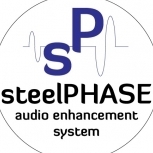
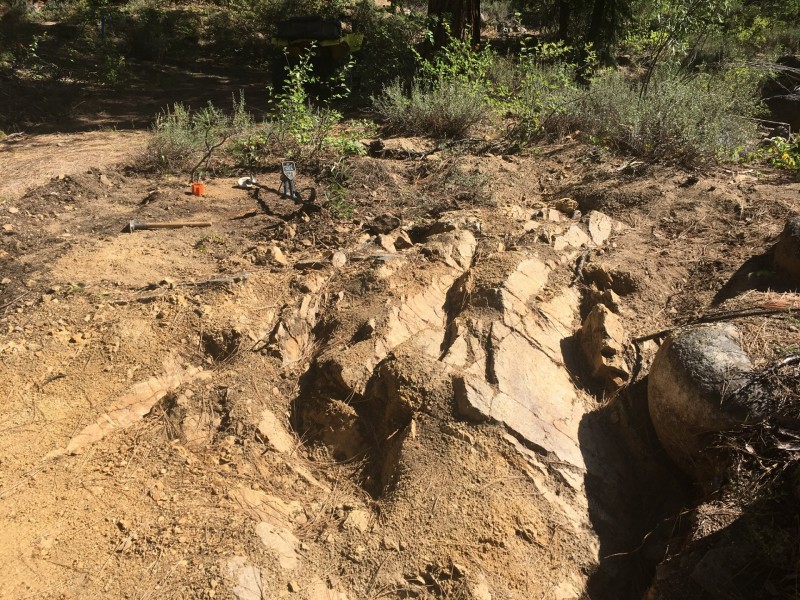
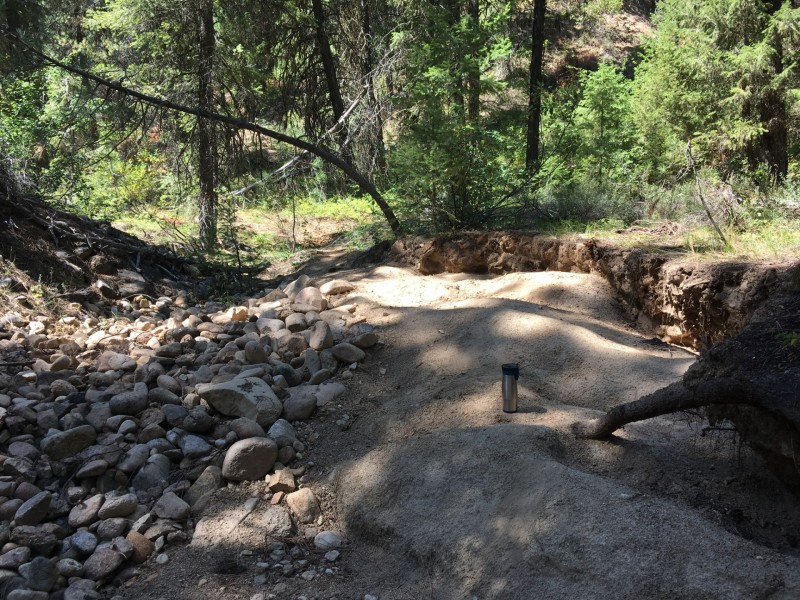
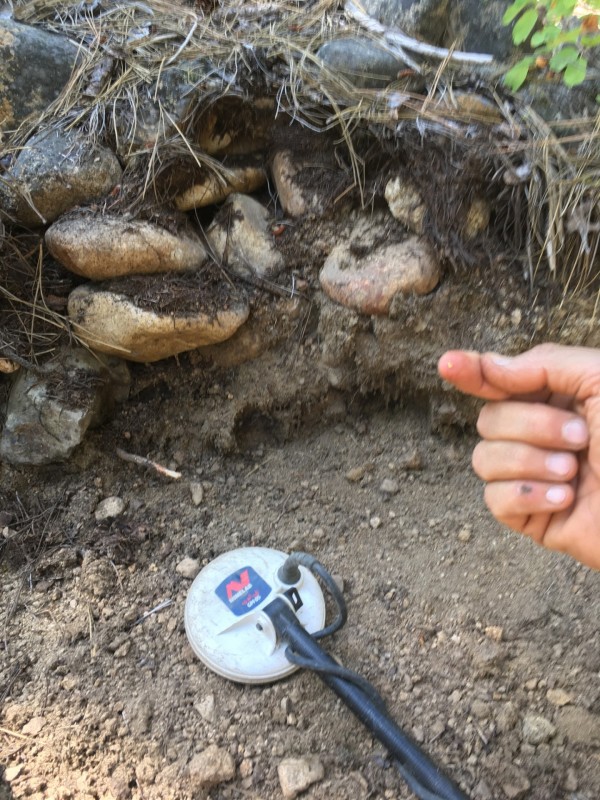
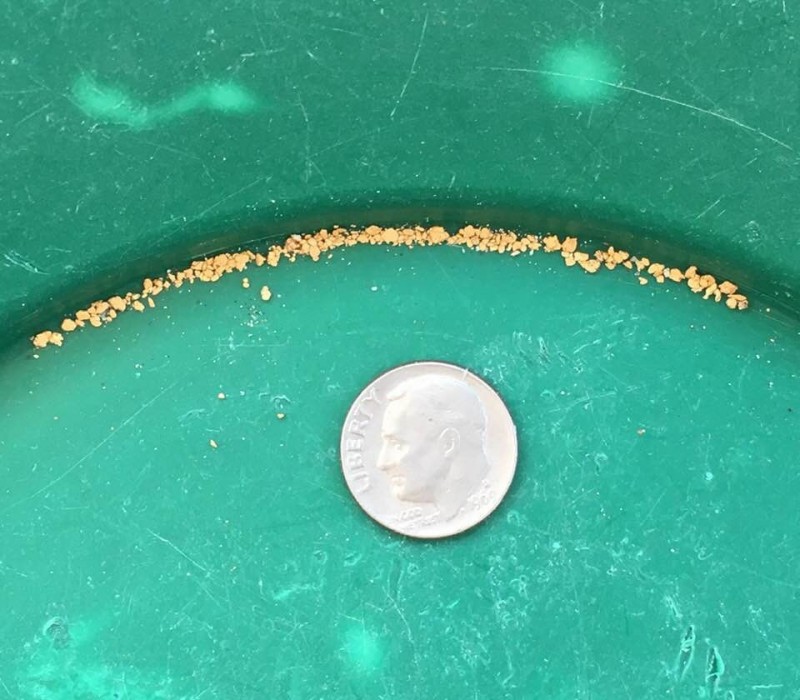
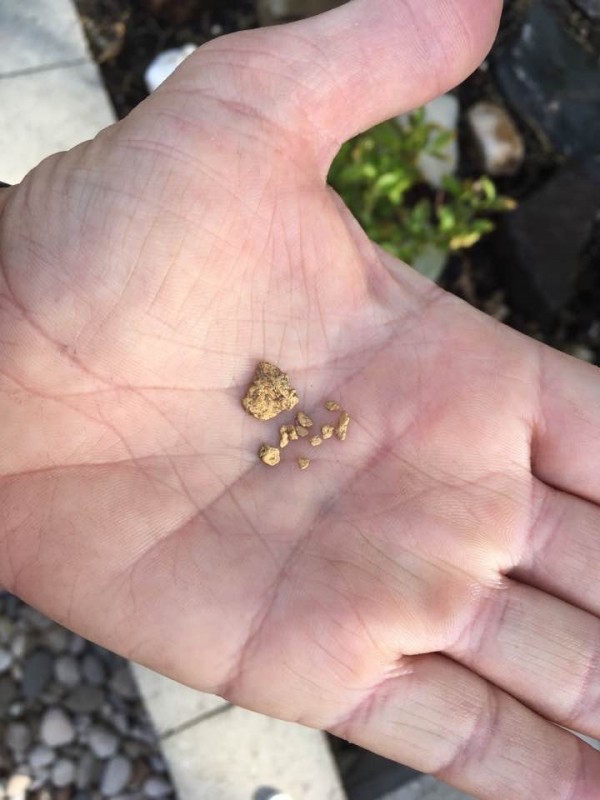
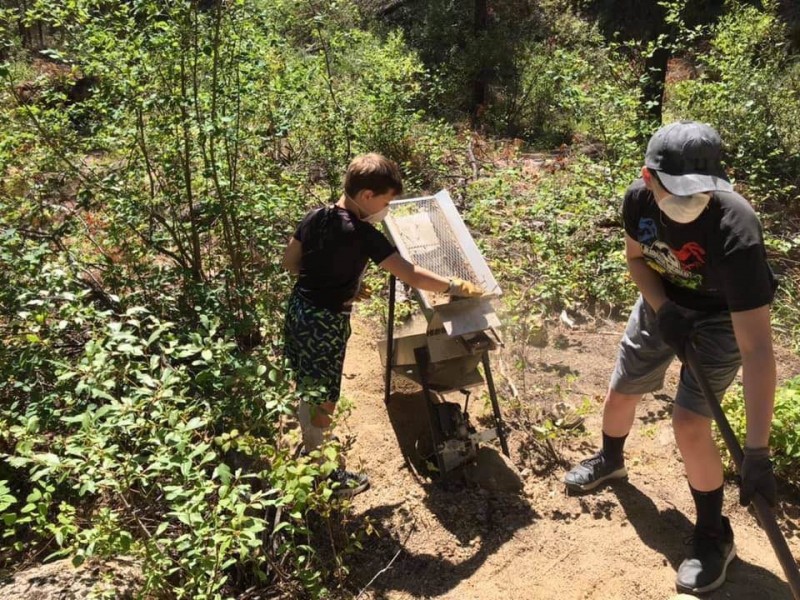
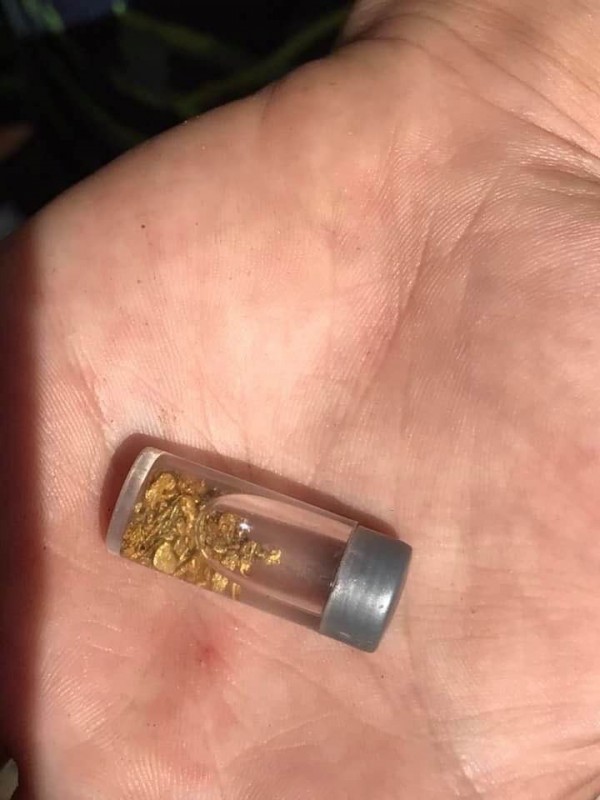
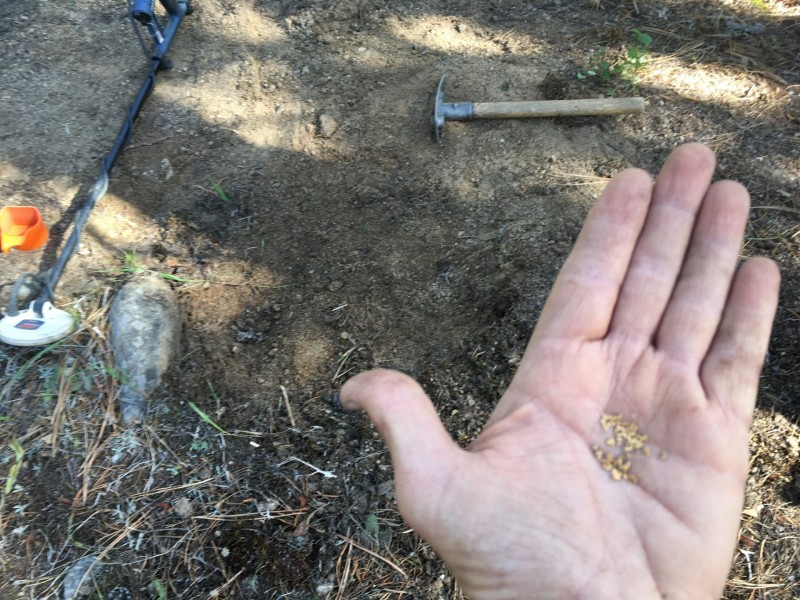
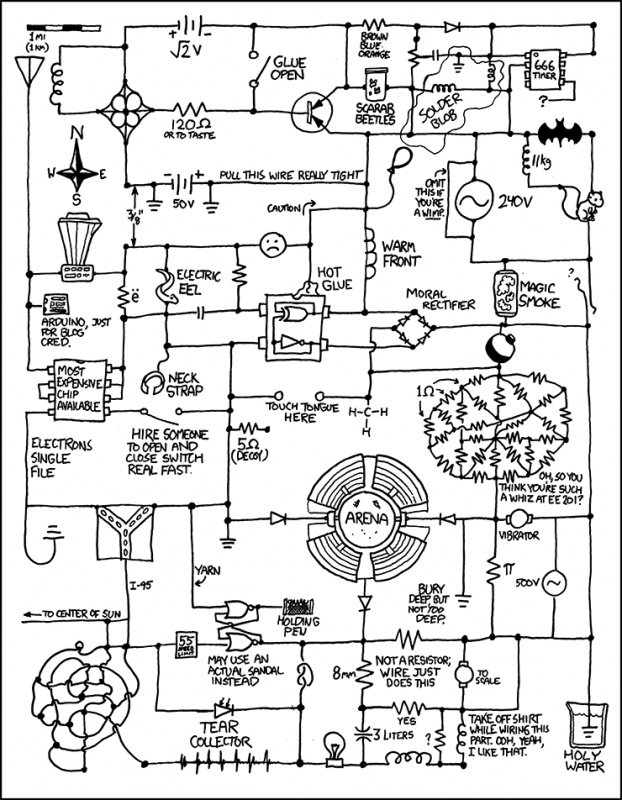
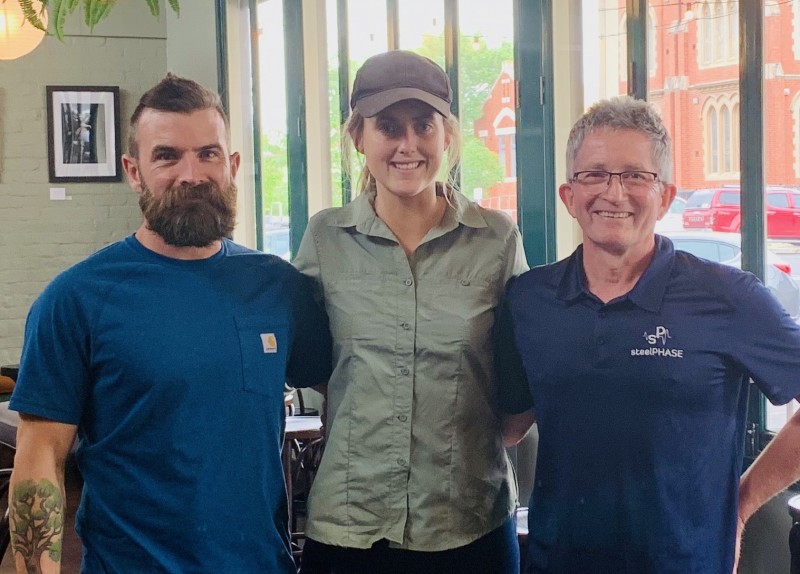
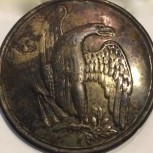
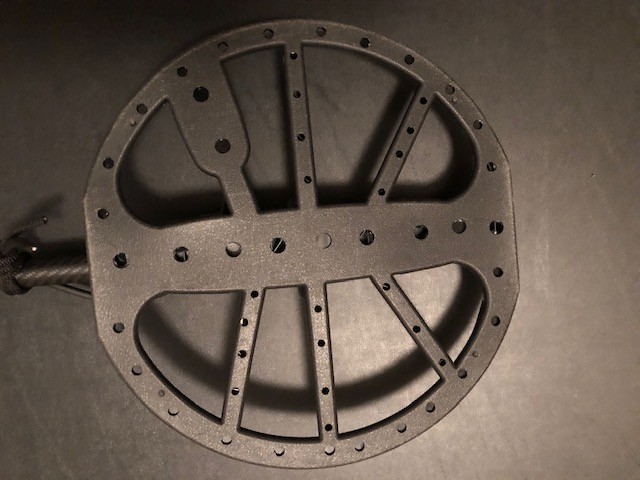



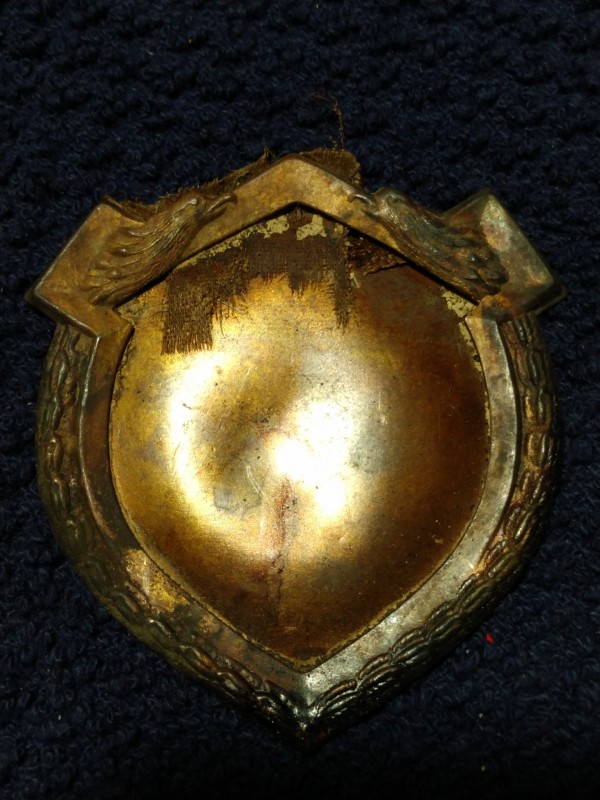
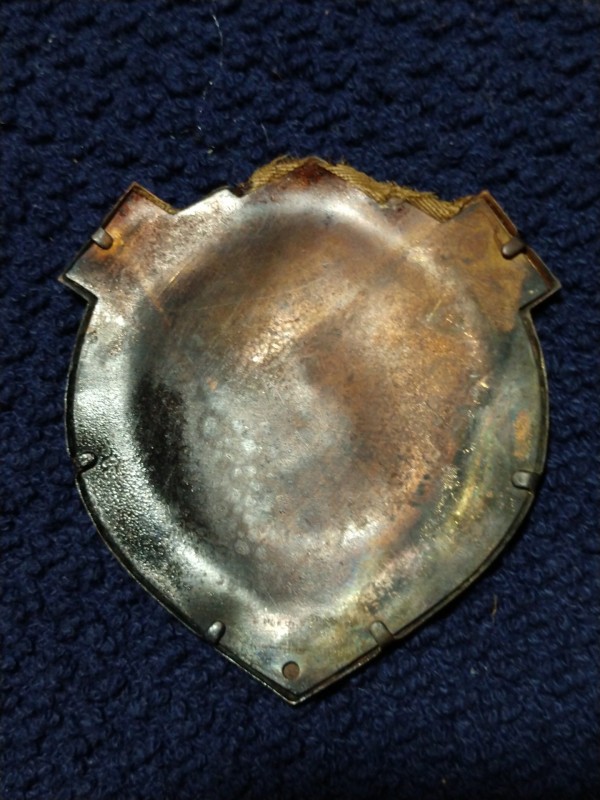

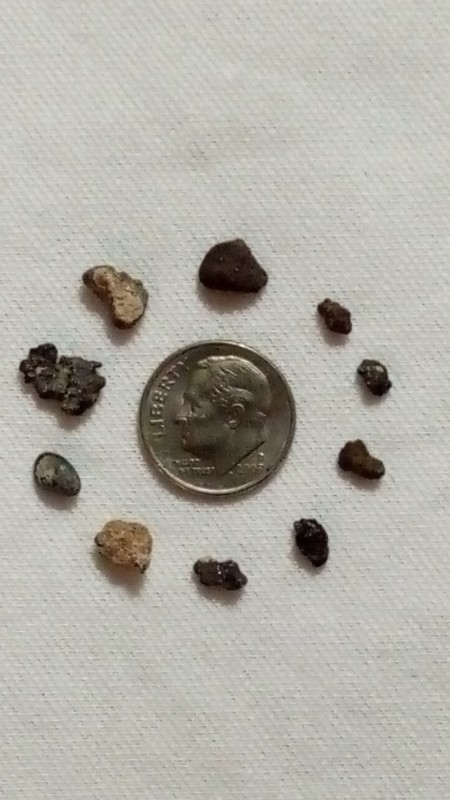
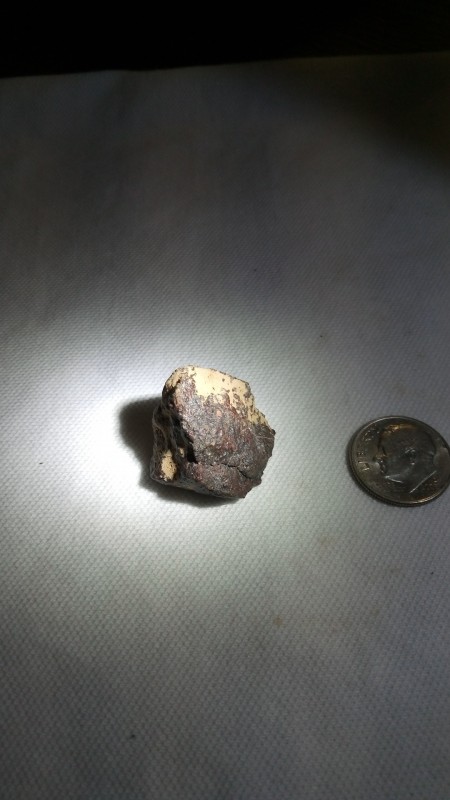
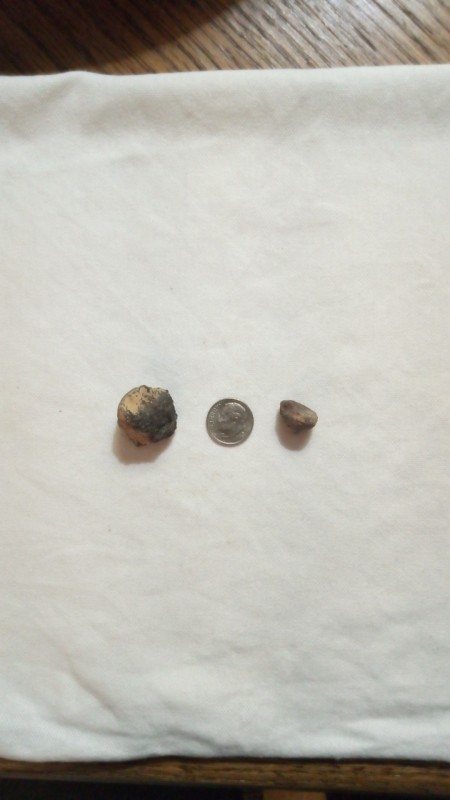
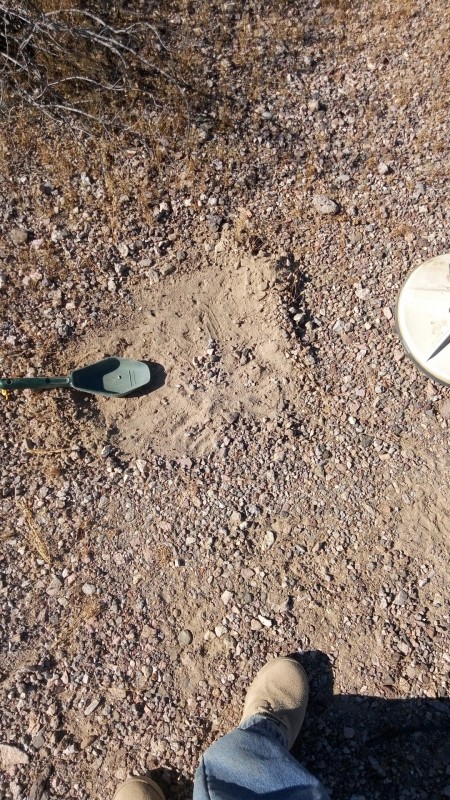
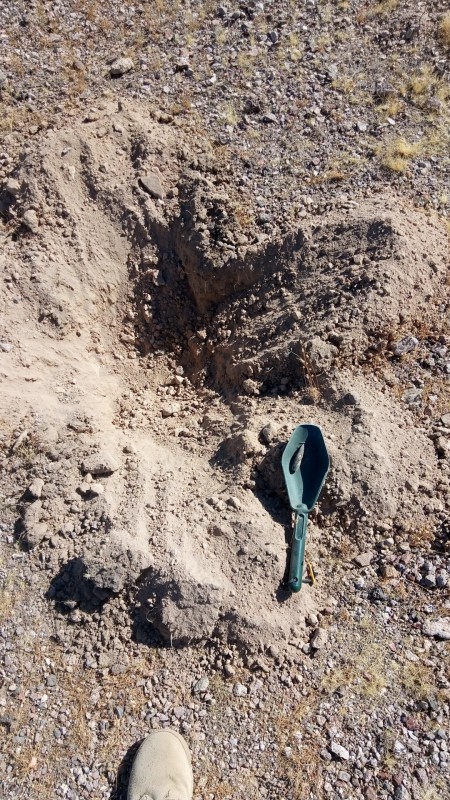
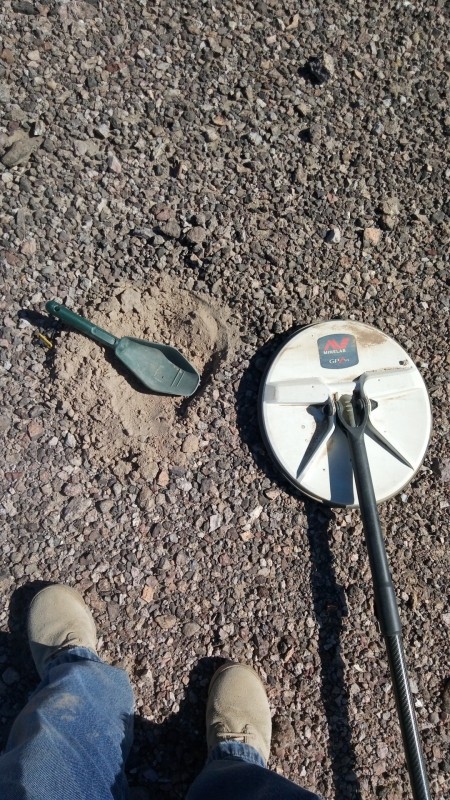
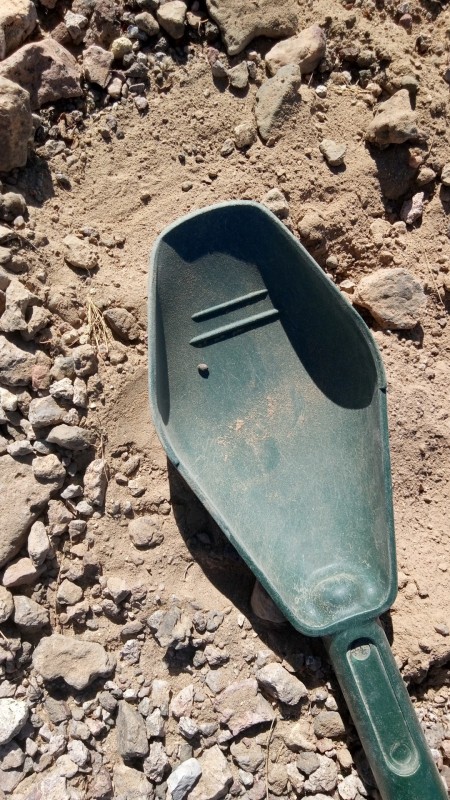
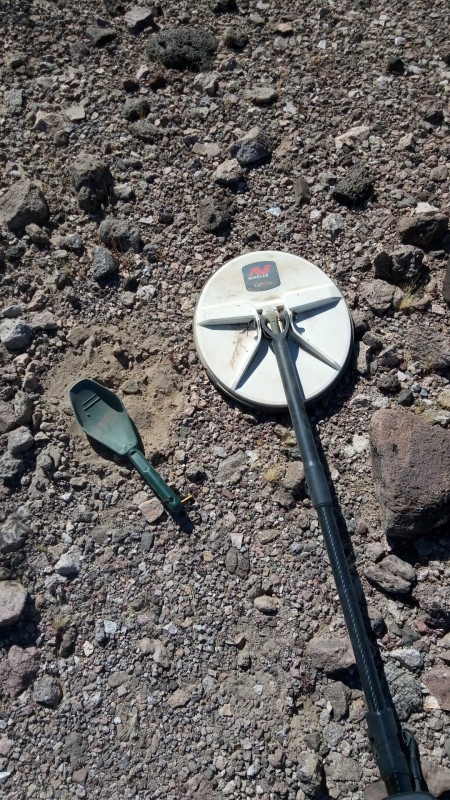




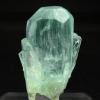

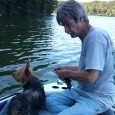

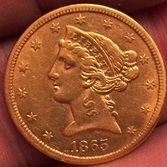
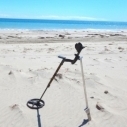

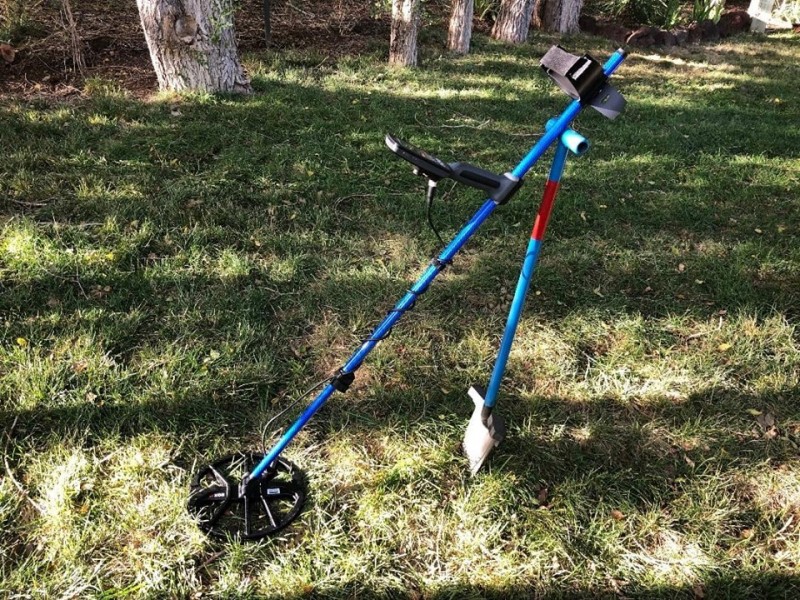

.thumb.jpg.ac5e8ee36e43bcab745dbc623fcf1874.jpg)